The Insta360 Flow Pro and the DJI RS 3 Mini are two great small gimbals, though they don’t compete directly with one another, and neither will handle a full-size cinema camera. If you’re looking for something to handle a cine lens paired with a RED, these are not the gimbals for you. But if you’re a solo operator or you work as part of a small team, you could use the Flow Pro with a phone and the RS 3 Mini to balance most mirrorless cameras with most lenses. I’ve used heavier cameras and heavier gimbals before, and unless you’re a gym junkie, weight really does matter when you’re moving around and tracking subjects.
Here, we’ll take a look at why you might want a gimbal in the first place, what these particular gimbals are especially good at, and what their limitations are. None of the equipment here was provided for review; I own it and have used it personally.
Why you might want a gimbal
When you can’t use a tripod, and you want more than a smooth pan or tilt, a gimbal will protect your camera from unintended shakes and jerks, keeping your shot level, and making your camera moves smoother. A stable shot allows the viewer to more easily focus on the content, rather than being distracted by shakes, and the moving shots you can now capture without dolly tracks of sliders can bring life to your edit. No matter which gimbal you use, if you want to move the camera, but you don’t want footage that bobs up and down, learn how to walk like a ninja.
Gimbals are not the only game in town, and there are many other ways to stabilize a shot, including electronic stabilization, lens stabilization, sensor stabilization and of course post-production stabilization. Many action cameras include excellent anti-shake modes, and the iPhone has Action Mode too. But if you don’t want to crop in too far on your sensor, or your camera doesn’t have great stabilization, or you want to use a camera mode that’s not compatible with the full stabilization tech — a gimbal is still a good choice. Another example: if you’re shooting Spatial 3D video or immersive 180° video, you really need to make every shot as stable as possible, or you’ll make people sick. Handheld, even stabilized, isn’t always good enough.
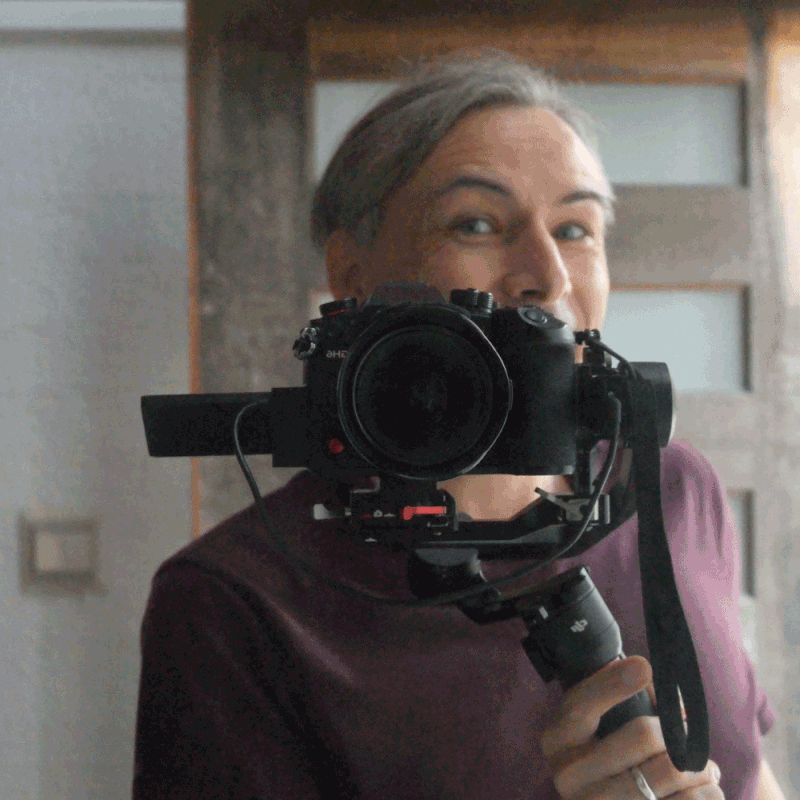
But it’s important to note that today’s gimbals are not just focused on stabilization. A gimbal can provide remote control over tilting and panning, or can track a subject without human input. Some of them can create 360° panoramas, or timelapses, or hyperlapses, or power your camera for long periods. If you’ve never used one, you might also be surprised how cheap they are today.
Let’s start with one of the latest phone gimbals.
The Insta360 Flow Pro (US$149)
The Insta360 Flow Pro is a phone-only gimbal that packs down small, but extends in two ways, with a selfie-stick-style extension tube and a tabletop tripod. There’s a 1/4-20 screw hole at the bottom if you want to mount it on a regular tripod or monopod, and it doesn’t require any balancing. To connect your phone, you can fit the spring-loaded mount to your phone, then use the magnets in the other side to hold it firmly on the gimbal.
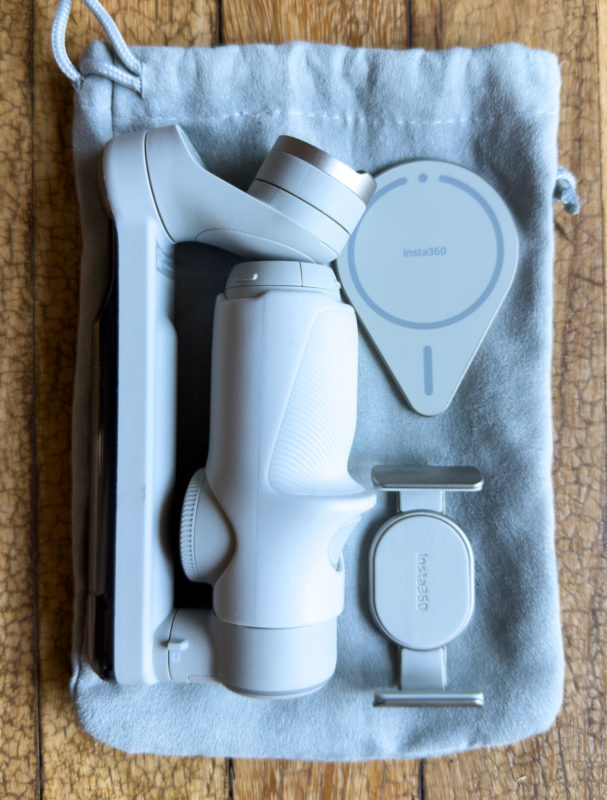
For slightly more money (US$20, iPhone only) you can buy an additional MagSafe mount that replaces the spring-loaded adapter. This mount makes mounting a one-click magnetic affair, and can stay on the back of your iPhone all day. The MagSafe mount absolutely makes setup quicker, and if I’m casually shooting while on a walk or day out, I want to take as little time as possible to be ready to shoot.
Insta360 include an app to make the most of the gimbal, and that’s where you’ll find most of the bells and whistles. It’s the same app you’ll use with other Insta360 products, like the Ace Pro, GO3, or many 360° cameras like the ones I’ve reviewed here before. It provides tips, ideas for videos, AI-based editing, gimbal settings and calibration, special shot modes, and advanced tracking options. For anything fancy, use the app.

So what’s the difference between the Flow and the Flow Pro? The Pro model includes full 360° rotation, very handy in some situations, and also DockKit compatibility, which is iPhone-only. DockKit sets up quickly, using NFC, and from that point, you can use the Flow Pro for simple person-based tracking while using any third-party video recording app. The front trigger can tun this feature on and off, and a green ring light shows you if tracking is active. This is critical if you want to use any other app to record video, and given how many options a modern iPhone has, this is something more serious video creators will want.
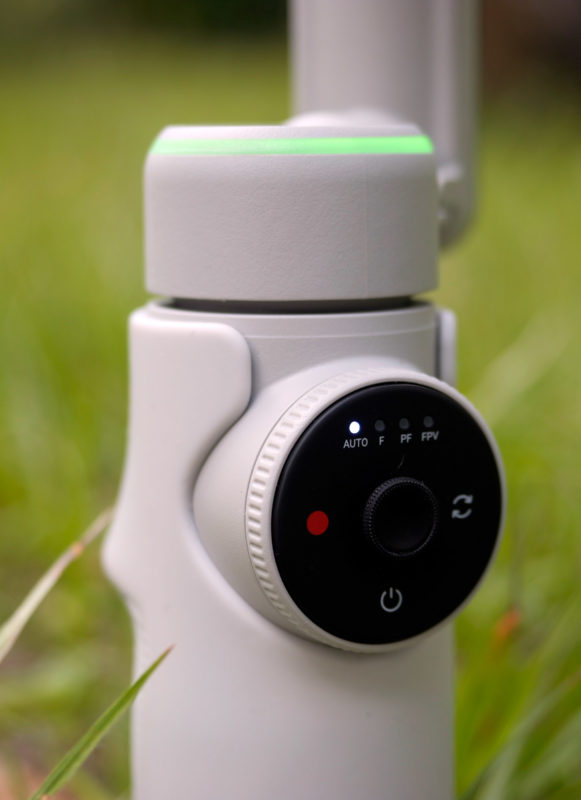
If I’m recording Spatial video on my iPhone 16 Pro Max, I might want to use the Camera app, or I might want to use Spatial Camera to enable 4K Spatial video with stabilization. But I can’t record in Spatial with the Insta360 app, so if I want any kind of tracking, I’ll need the Flow Pro. Similarly, although the Insta360 app does allow ProRes Log recording, if I want to record in Log without using ProRes, I’ll need to move to an app like Kino or Blackmagic Camera. Or maybe you’d simply rather shoot with Final Cut Camera, or the official Camera app, because you’d prefer to. You’ll want the Flow Pro too.
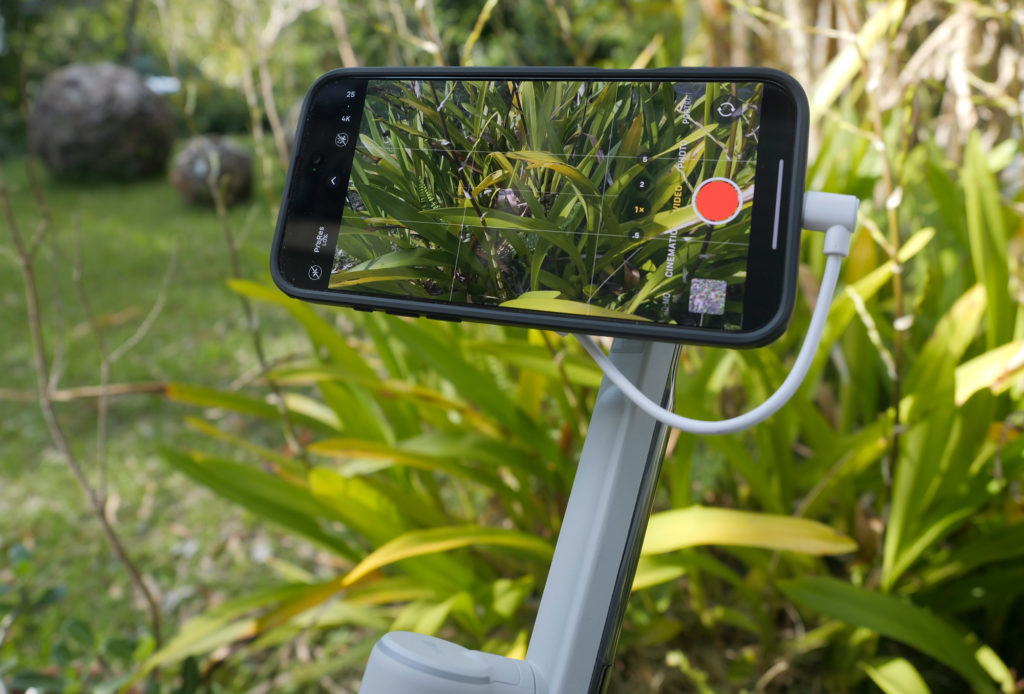
This gimbal isn’t perfect, though, and one issue is that it doesn’t offer a huge amount of tilt flexibility when placed on a table. If you’re planning on using it to smooth out a shot at eye height, shooting yourself or away from you, it’s best to extend the gimbal vertically, tilt the top part towards you, and then hold the base of the gimbal out to the side. While this definitely increases your tilt range, means you have to try a little harder to pull off some kinds of moving shots. Other small folding gimbals like the DJI Osmo Mobile 6 have similar issues, and in general, the phone gimbals that don’t have this limitation are a little larger and heavier.
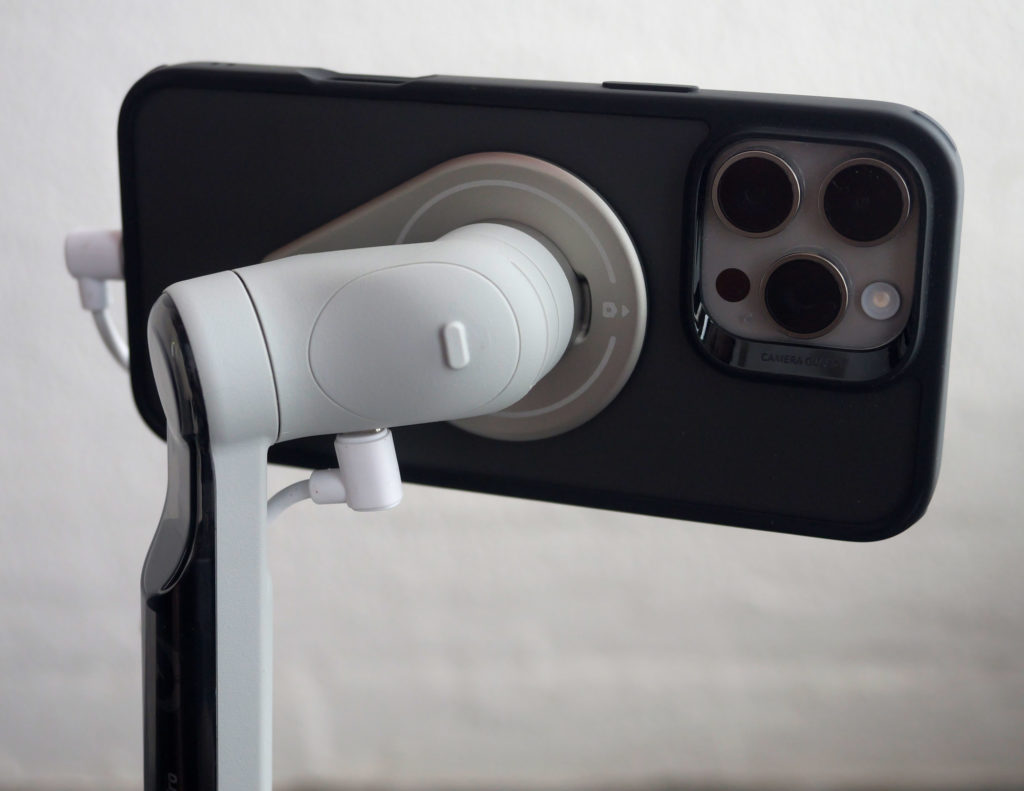
Another issue is that the weight limit (300g) is designed with modern phones in mind, but not with phones loaded with accessories — you’ll be near the limit with an iPhone 16 Pro Max with a case. So, if you want to use the included cold shoe for mounting a microphone, be sure to use a cable that’s flexible enough not to pull on the phone as it moves around. Mind you, if you don’t need external sound, there’s a USB-C port near the top that can power the phone instead.
But what if you want to stabilise a bigger camera, or you want to rig up an iPhone well beyond its original weight? Time for…
The DJI RS 3 Mini (US$279)
With a much larger payload (2000g/2kg/4.4lbs) this gimbal has a very different focus, on stabilization rather than automation. There’s plenty of range in all three axes of motion, though if you try to pull off a long tilt with a long lens, you might hit the tripod itself. But it’s a strong, capable gimbal that can compensate for more significant movement than any phone gimbal could — and which gives more control over the movement, too. With the RS3 Mini, it’s possible to lock the camera direction, no matter how the gimbal is moved — a trick the Flow Pro can only manage if you hold down its trigger.
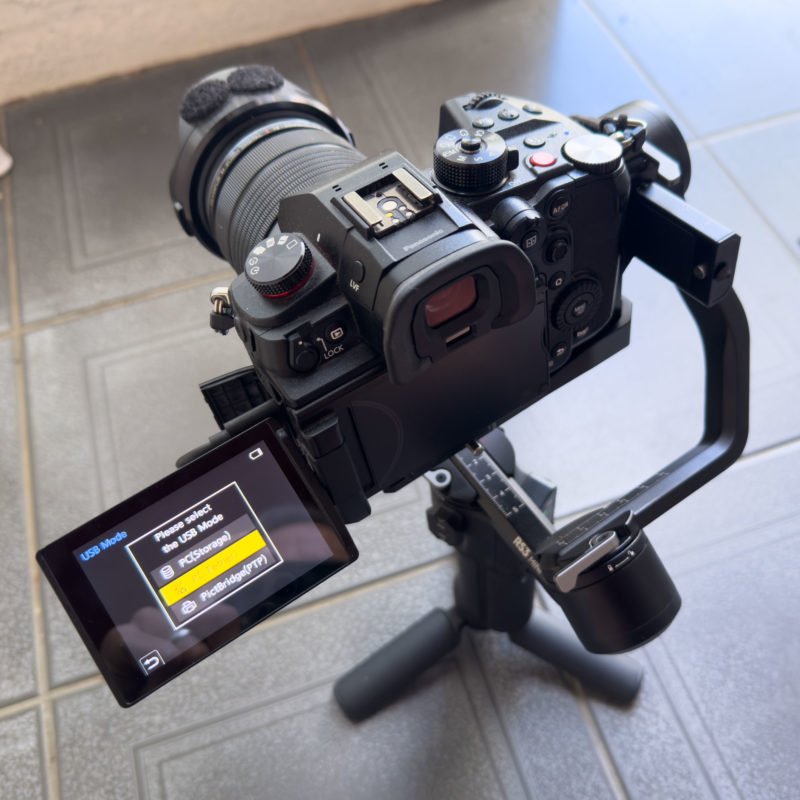
That stability comes at the cost of flexibility in setup, and in weight. It’s necessary to balance the gimbal whenever you load a new camera, or change from a heavy to a light lens. Once you get used to it, balancing isn’t difficult, and the locking mechanisms on each axis make it easy to lock down all axes except the one you’re trying to balance. When not in use, you may be able to lock the arms and fold the gimbal up pretty small, but (depending on your camera setup) you may not be able to fold it completely.

The RS3 Mini itself weighs 850g (1.87lbs), not insubstantial. When you add your camera and lens setup, and then hold it for half an hour, or a few hours at an event, you may feel it. I use the Panasonic Lumix GH6, which isn’t that light, but with lenses that are on the lighter side, and I’m able to shoot with this setup pretty comfortably.
That wasn’t the case with my previous “serious” gimbal, the original Ronin S, which at 1.86 kg (4.1 lb) became a serious burden over time, and if you’re using heavy full-frame gear that in turn requires a heavier gimbal, it simply might not be possible to hand-hold it with any gimbal for a long shoot. For me, lightness matters, but if you need to support a more serious rig, there are bigger, newer, and more capable gimbals in the same series, including the RS4 and RS4 Pro.
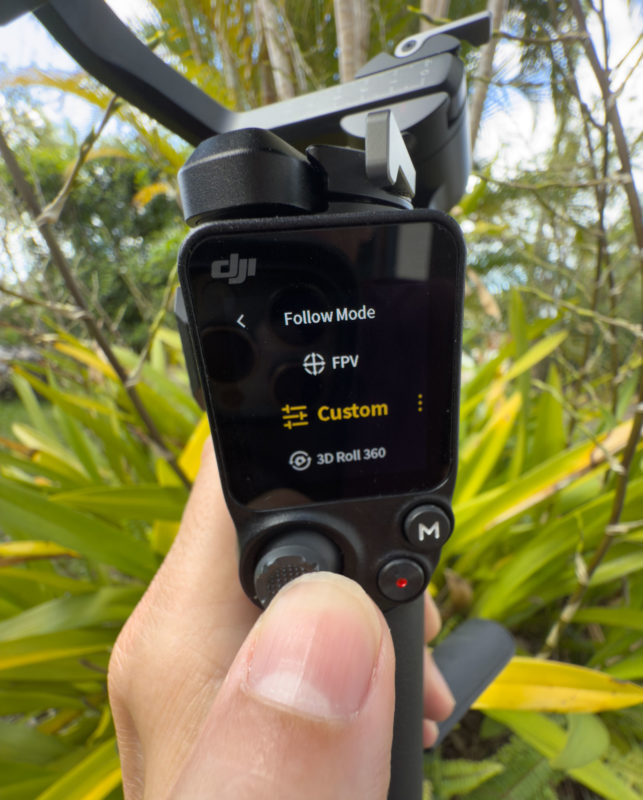
DJI’s gimbals don’t just offer stability, but control too. The RS3 Mini’s built-in joystick is comfortable to use, and gives precise control for smooth pans and tilts with a gentle start and finish — you may not need a high-end tripod head for smooth pans any more. Beyond simply supporting a camera, the RS3 Mini can also connect to one directly, either with an included USB-C cable or even (with some Sonys) wirelessly. (Note that even if you connect with a cable, the gimbal doesn’t provide enough power to keep the camera charged.)
The gimbal can then start and stop recording on the camera, trigger auto focus, and if you also mount a phone running the DJI Ronin app, potentially offer automated tracking. But I suspect most serious camera operators want to operate the camera themselves, and are more interested in remote control: starting, stopping, and reframing.
If you have a remote monitor hooked up to your camera, you can place the camera out of reach, and control its movement using either your phone’s gyroscope (moving the phone physically to move the gimbal) or with the joysticks on an Xbox or Playstation controller. If you can’t be next to the camera, this is one of the easiest ways to control it.
Do note that if you plan to mostly shoot with a bare phone, it’s going to be too light to balance, and you’ll need to add weight to be able to use it. For anyone setting up a phone with a cage, plus a mic receiver, SSD and power source, you shouldn’t have too much trouble.
Conclusion
There’s a world of gimbals out there, and these are just two. DJI make phone gimbals too, but none of them support DockKit just yet, and Insta360 make plenty of other products but not large gimbals. Still, most solo professional videographers don’t need to hold several kilograms of weight, and can stay at the lower end of the market. At the end of the day, I can recommend both of these gimbals.
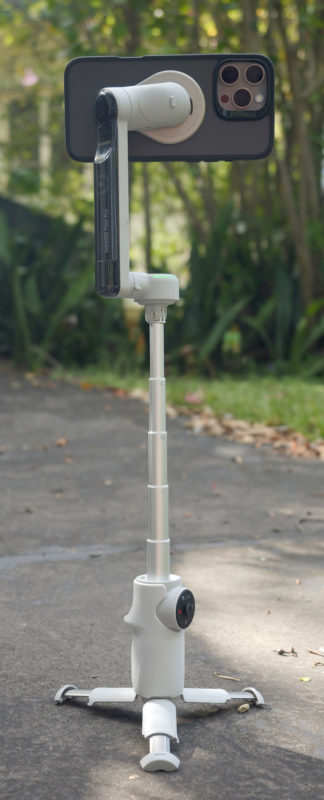
If your focus is on automation and tracking, or you only need to stabilize a phone, phone gimbals are easier to set up and will help a solo operator capture a variety of shots. To match a dedicated camera, go for a larger, heavier gimbal; what you lose in flexibility you’ll get back in stabilization performance. While the Insta360 Flow Pro isn’t meant for fast, sudden movements, you can smooth out a running shot with most cameras on the RS3 Mini — it’s solid.
Either way, the right gimbal will give you flexibility on set, because you won’t need to set up and repeatedly move a tripod, and will give you flexibility in the edit bay, because you’ll be able to use new kinds of smooth, dynamic shots. At both ends of a production, a gimbal can impress a client without breaking your back or emptying your wallet. If you shoot, take a look.
- Insta360 Flow Pro US$149
- DJI RS 3 Mini US$279

Filmtools
Filmmakers go-to destination for pre-production, production & post production equipment!
Shop Now













